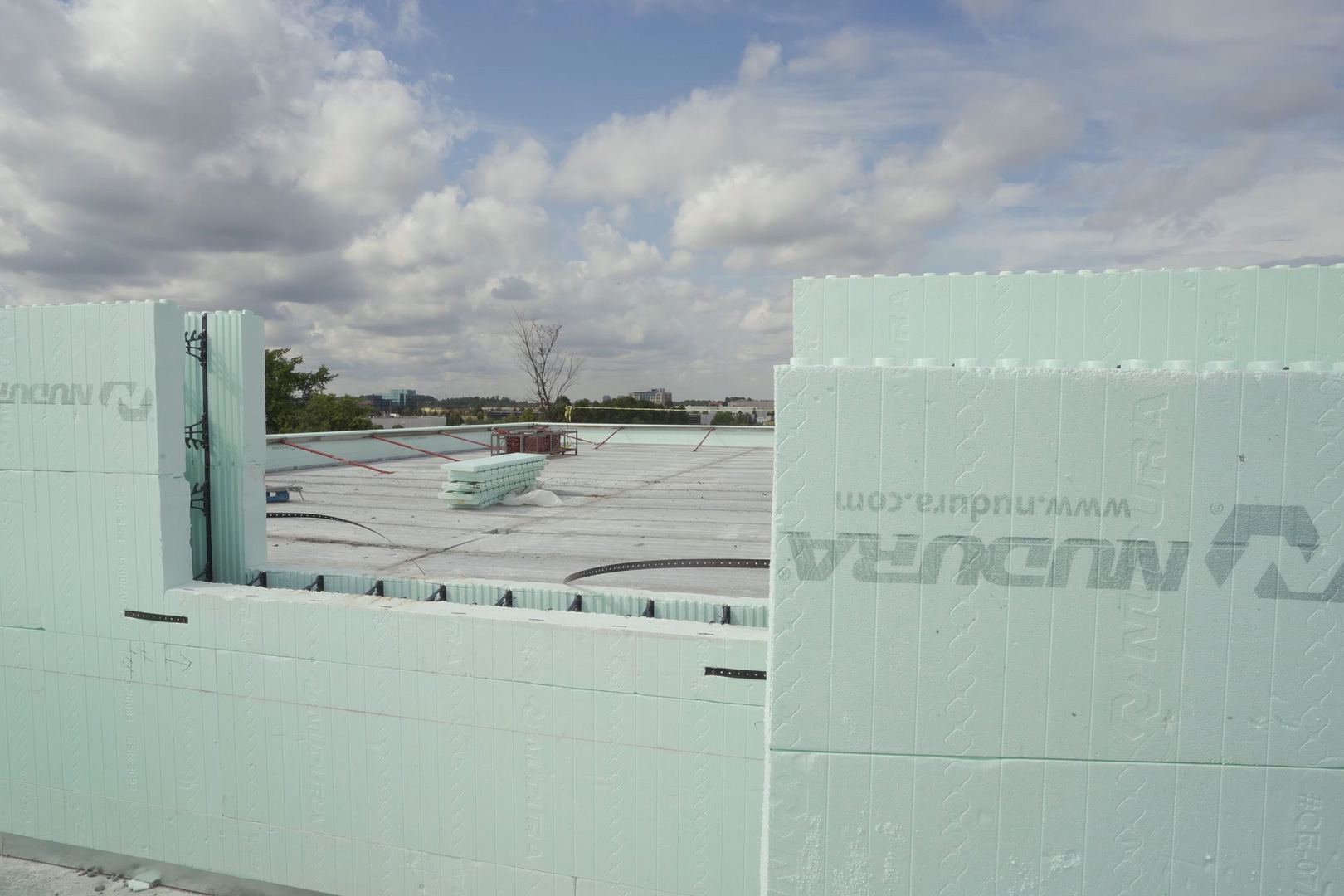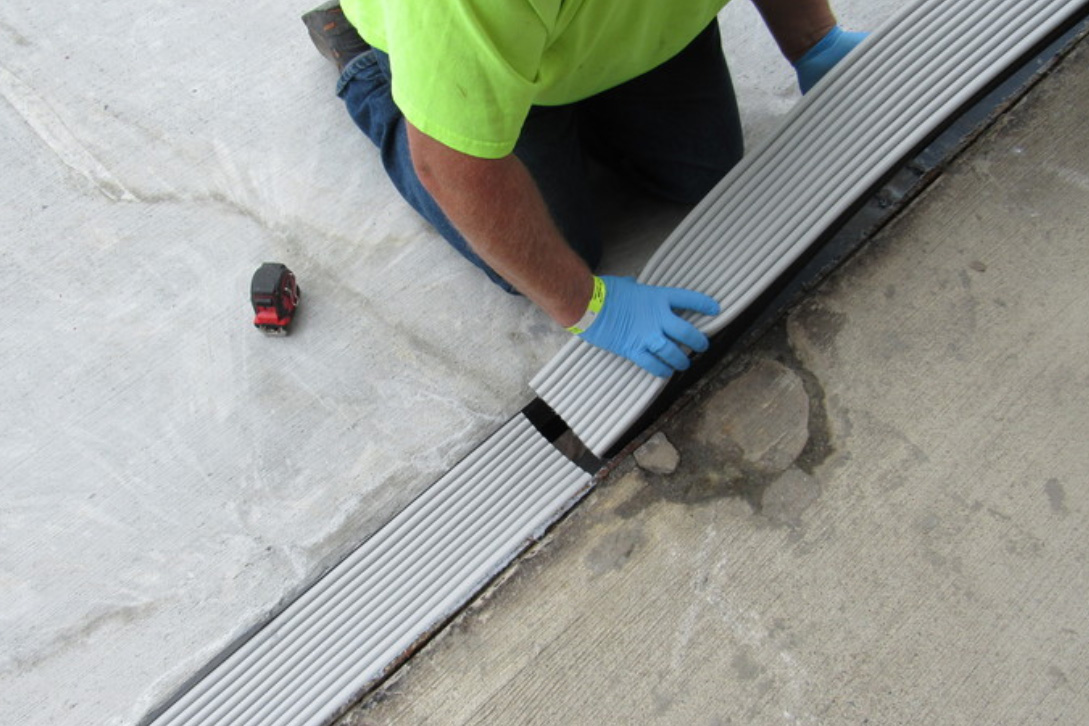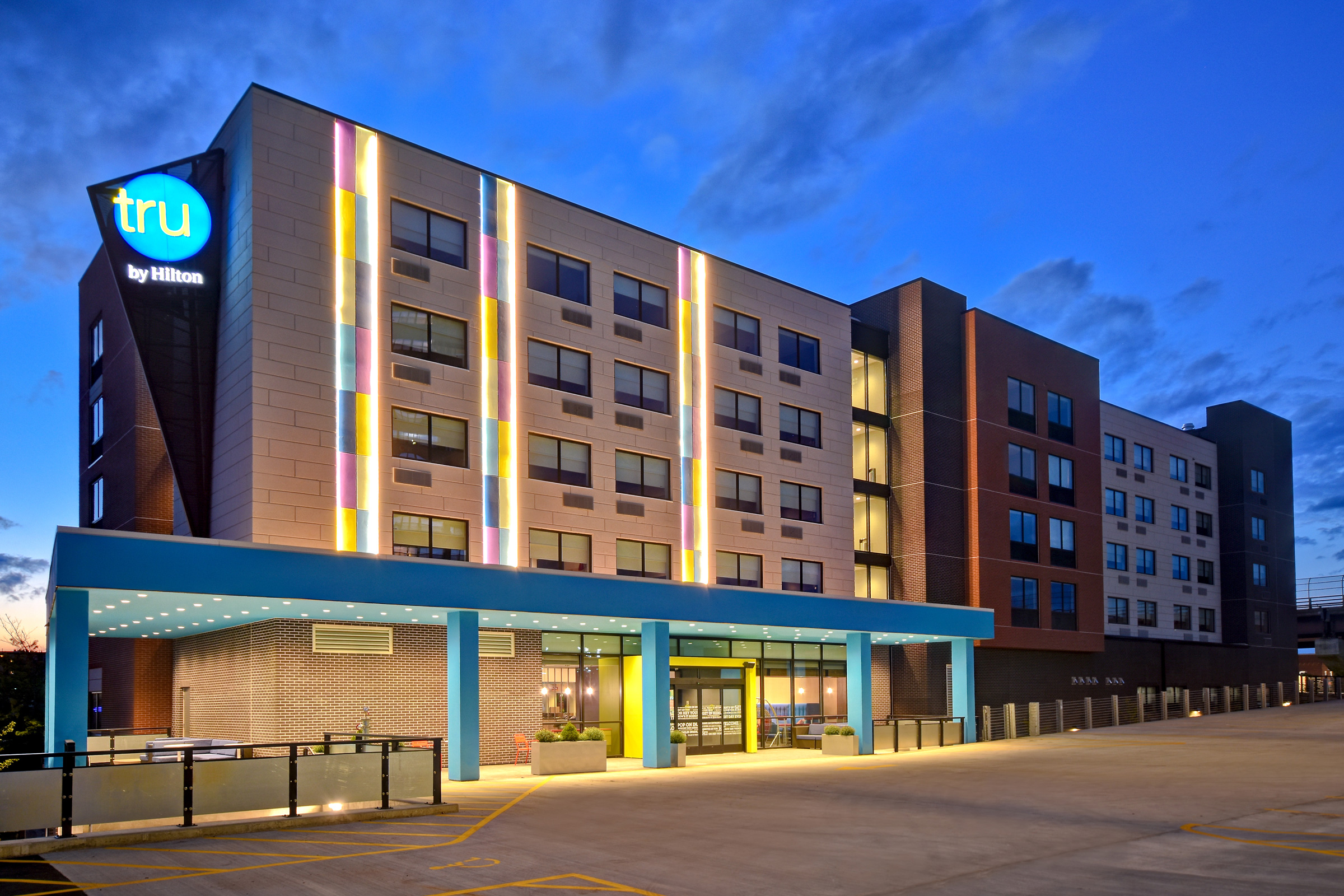Story at a glance:
- Tremco Construction Products Group (CPG) provides all six sides of a building enclosure—the four walls, the foundation, and the roof.
- The Building Science Lab allows the Tremco CPG companies and their customers and partners to test systems to perform and exceed code.
- Tremco offers education to customers and industry professionals through blogs, training sessions, virtual and in-person events, and more.
Like puzzle pieces that fit together, the companies of Tremco Construction Products Group (CPG) bring expertise and industry experience that together assemble airtight, thermally efficient, watertight building envelopes. “We bring so many experts together that the architect or engineer doesn’t have to go and ask multiple questions independently of different companies. All those people are under one roof, or are on one call as we are today on Zoom,” says Marcy Tyler, Tremco’s director of building science.
From testing the resiliency of building components at the Building Science Laboratory to the Build Meets World Blog to the weekly video stream, Tremco Live, Tremco strives to understand and meet customers wherever they are in their projects. It’s all about matching solution to project to the people who actually use it.
“It’s not a cookie-cutter approach; we can’t say it’s one-fits-all,” Tyler says. “We have all the pieces and parts and can pull them together to give our customers that comprehensive solution and highest performance level. Collaboration is a key part of it—and why we have so many resources supporting customers in lots of areas to get them to where their performance goals can be met.”
We talked to Tyler about how these six brands—Tremco Incorporated’s Commercial Sealants & Waterproofing and Roofing & Building Maintenance operating divisions; Dryvit Systems, Inc.; Nudura Inc.; Prebuck LLC; Willseal; Weatherproofing Technologies, Inc. and Weatherproofing Technologies Canada, Inc—became one, and why it matters.
How did these six brands come together as Tremco CPG?

Photo courtesy of Tremco CPG Companies
All of the companies are part of RPM. Over the years RPM recognized there was the ability for us to work together better. Within the RPM group they reorganized us into four reporting categories from a high level perspective. That’s what really brought these companies together under the Tremco Construction Products Group.
We started working together through the individual companies to ask ourselves: What are the best parts? How can we strengthen each other’s brands and bring them together? Where we already each had very strong positions in the industry, now we’re able to bring them together and offer industry-leading education, products, and best practices. We’re very much aligned there, and we’re stronger together in building out what we have for tested solutions for the construction industry—residential, commercial, all of it.
What makes Tremco CPG building envelope systems stand out?
Simply put, we aim to build above and beyond code. We know there are differences everyone faces geographically—the needs of building on the coast are different than in the mountains. We want to look at what each customer needs and how we can address the requirements they have for their structure, then see how we can go beyond that to really give that end user the confidence they need.
We’ve invested a lot in being able to test. We’ll always rely on our third-party partners to do testing and validate our systems, but we also have the ability to do a lot of upfront testing and do project specific tests at our Building Science Laboratory. We can look at air and wind loading on a 14- to 20-story building and what kind of impact that has, not only on our system, but on the way things are detailed. The best part is we share that with that whole project team so everyone can understand the nuances between choosing different products that maybe aren’t as elastic or robust. We get to prove the resiliency they’re going to get from some of the systems we’re able to promote and use on a regular basis.
What sustainability certifications and building standards can a structure with a Tremco system meet?

Photo courtesy of Tremco CPG Companies
When we start to think about how a building is going to come together, it starts with putting together the structural component and then all the other pieces to make this building even more sustainable—or whatever the directive is from the customer.
Nudura, or the insulated concrete form (ICF) product, allows us a whole host of options, starting from the ground up when we look at the strength of the building, or the sustainability aspect of withstanding high winds in Tornado Alley, or providing energy efficiency. We have a structure that can meet Passive House, and we’ve been involved in numerous LEED projects across Canada and the US. We have a whole host of things that allow a project to meet sustainability standards. We start that from the beginning.
If they’re looking for Passive House, we have a lot of case studies we can refer to for that. If people have LEED goals, we achieved LEED accreditation with our own renovation at our headquarters. When we start talking about things like net zero or net positive, Nudura has lots of examples about how they work really closely with the design team and the building owner to achieve those goals.
Where does design really factor in?
No two buildings are created the same. By having a wide array of everything from structural solutions to tying in your windows and flashings and parapets and roofs—all that comes together and we have a whole menu of options. It gives designers the flexibility to say, “Here’s what I need. Here’s where the building is. Let’s create a solution and work together.”
Not only are our products flexible, but we are flexible in our approach. A lot of times people talk about constructability and think of the structure as a box, but there’s so many ways we can approach that and provide different elements to meet architectural demands. We’re really looking at that constructability in our designs and in our conversations, especially at our testing facility. We’re not having to sacrifice the aesthetics to get the performance you want. We really can provide those solutions that deliver the performance at the same time.
What does working with Tremco CPG companies look like, start to finish?

Photo courtesy of Tremco CPG Companies
We like to be engaged as early as possible, especially when we’re talking about selecting structural solutions. We’re really there to be partners throughout the entire construction process. We have our test facility that enables us to build different portions of the building and test for air moisture and thermal performance; we can help with constructability reviews; and we can help with design document reviews.
Throughout the construction process we’re there to ensure products are properly installed. As that building goes into operation, we’re there to help facility managers make sure they maintain those building components over time so when the time comes to make sure proper maintenance is going on, we’re there to help support that case as well. It really is cradle to cradle when you work with Tremco construction products.
We have some of the best technical expertise in our industry. When we’re beginning to go through this process there are a lot of questions: Why would I use this? Or how would I use this? To get to any “ultimate” building envelope or structure like we talked about, it really takes the experts on our technical teams working with architects and engineers to help them cross off some of their fears and understand what they think they know or what maybe they need a bit more education on.
How are Tremco CPG companies educating the industry as a whole?
We have internal customers and external customers, and they’re all really important to us. Dryvit holds monthly contractor training. We do a lot of education within Nudura, where we used to do a lot of in-person work with our distributors. We work closely with industry associations, like the Air Barrier Association of America (ABAA) or the Sealant Waterproofing Restoration Institute, and really embrace what they’re doing in terms of training. We like to be able to provide ABAA’s installer training program, and the Sealant Waterproofing and Restoration Institute does the same kind of thing.
We host a lot at our Building Science Laboratory. I think we had over 500 people in one calendar year when we were able to have people come in person, mostly design professionals, giving them the time to look at our equipment, talk to us about what they see as their design challenges. With Covid we had to move it all into the virtual world. We try to do at least two to four of those a month—pulling in our distributor reps, pulling in our contractors, and, of course, the design community to ask: What are your concerns? What are your design challenges? How can we work on a solution together? Whether it’s looking at design specifications details, or coming to Cleveland and building it, or building it where you’re at and shipping it to us so we can test it.
You also do “Tremco CPG Live” every Friday. Who is your audience there?
When we were doing our in-person tours at our test facility, it was the opportunity for the president of Tremco to have that one-on-one time with our customers. When Covid hit, we needed a new way to reach customers, so every week we do these broadcasts with the idea that if your customer has a great story to tell, you need to give them a platform to tell it on. It’s all based on the idea of raising up our customers and educating the industry, but the key part is we want it to be light—a nice way for people to wind down their week. I think it really helped us internally. Geographically we haven’t been able to connect as much as we used to before Covid, and this gives us a central point to engage. Distributors, contractors, and design professionals are all watching it, so it’s really something we hope is informative and interesting for everyone.
How is the industry changing? What trends do you see?
ICF technology has seen a rapid increase in the last year. It’s been a slow and long journey with this product because it’s still new to people; it’s not something people build with every day.
This last year has given us the opportunity to bring the ICF story into reality. We’ve seen a lot of people transfer over to the technology, and once somebody touches this product, installs it, and the end users work and live in it, they immediately see the benefits in the energy efficiency, resiliency, and cost of the structure. We were able to tear down some perceptions over the last year with Covid. So from an ICF perspective, we’re touching the cusp of something really great and bringing a lot of attention to a product that people are still learning about.
Also resiliency is something more and more people are focusing on, I think because we are seeing more extreme weather events. Fortunately for us we’ve always had a focus on that with our Building Science Laboratory, where our very first build was 11 years ago. Understanding how something’s going to perform when high wind load is affecting it is something we thought was important even way back then. We invest in understanding the performance of our products in these extremes. It’s working out favorably because we have these years of experience and those nuances.
Offsite construction is certainly a big up-and-coming trend right now. Everyone is feeling the time crunch and the labor crunch as we try to keep the construction world moving. With offsite construction and panelization we’ve got an array of components we can work into panels.
When you’re designing for offsite construction like panelization and modular, it’s really about how the adjacent systems come together, and how we test it—which we can do in our Building Science Lab. We can provide a whole portfolio of solutions that are tested and ready to go. Eliminating any issues upfront makes the project go faster and smoother and also makes it economically favorable. I think people tend to ask, “What am I compromising?” The one thing we’ll never compromise on is performance. Because we’re being innovative in our approach on speed and simplification, it can be economically favorable, but then we’ve got these great, robust, resilient systems for so many areas of your building performance.
How are you making existing structures more energy-efficient?
We’ve touched on the speed and simplicity aspects of building, but the third piece is extending the life of the building. We have a lot of expertise in restoration and repair, and we have solutions that can help minimize the amount of waste that’s coming out of a restoration job. Do you want to pull all the lights off that building and replace them, or can we work through a restoration solution that perhaps saves what’s there and still gets back to the performance you need and extends the life of that building?
There are a couple of great examples of this when you look at how windows affect the energy efficiency of your structure. The windows themselves obviously play a role, but if the perimeter of the windows are leaking or causing issues, people tend to think they have to replace that window. We have lots of situations where a design professional is making sure everything is structurally sound, they’ve come up with a plan, and they call it the useful life of windows. Everything they’re doing is to extend that. We have a lot of studies where we’ve been able to extend the life of windows, adding in some of our flexible membranes that essentially encapsulate that troubled spot or leaking area and getting it back to being air- and water-tight.
What’s an example of this in action?
The Baltimore Washington Airport project is a great example. One of the terminals was leaking so bad the airline considered pulling out of that airport because their customers were getting soaked. You tend to think you’ve got to replace the windows, but I’m working really closely with design professionals and our installers. They came up with a solution to encapsulate the issue and keep the glass in the structure. So not only did we not send all of those materials into a landfill, but now we’ve got a chance to make it energy-efficient. Our roofing division has a simulation to compare the waste created if they took your roof, pulled it off and replaced it versus the waste from taking the time to assess and maintain your roof on a regular basis and just re-coat over it to extend that life.
It goes beyond just materials and waste as well. If we’re doing these types of restorations and repairs, you’re looking at less downtime around that building, less disruption to the community surrounding it. You’re not having to put up scaffolding and take windows out and replace them. It’s much faster to restore and repair and doesn’t disrupt the people in the building, people around the building, and more—especially thinking about traffic patterns and safety and protection. There’s a lot that goes into these types of projects, and sometimes finding those solutions is less about the material and more about the overall project and how you’re going to complete it in a way that helps the owner.
What should designers and architects consider before turning to a Tremco CPG company?
When it comes to the areas that could potentially have issues on your building, it’s not generally the big parts people see; it’s going to be the connections, the transitions, and that’s where we come into play and help you out. We’ve got your membranes and we have your coatings and we have your ICF, but we also have flexible connectivity pieces, which we all know can be those points of concern or issues later on.
The biggest thing is just making sure our customers understand that we’re a resource, and we’ve always and will forever need and invest in our people. I had a general contractor call me and he goes, “This isn’t your product, but I need some help and I can’t get any answers.” So we walked all the way through it and he’s like, “Marcy, you’ve been so helpful; how come they’re not helping me?” And I tell him, “I can’t answer that, but I think you know where you should come next time you specify a product.”
We’re dedicated to that customer, and that’s always been true out of all of the companies that make up Tremco CPG for their area of specialty before we came together. That’s not changing. It’s only getting stronger.


